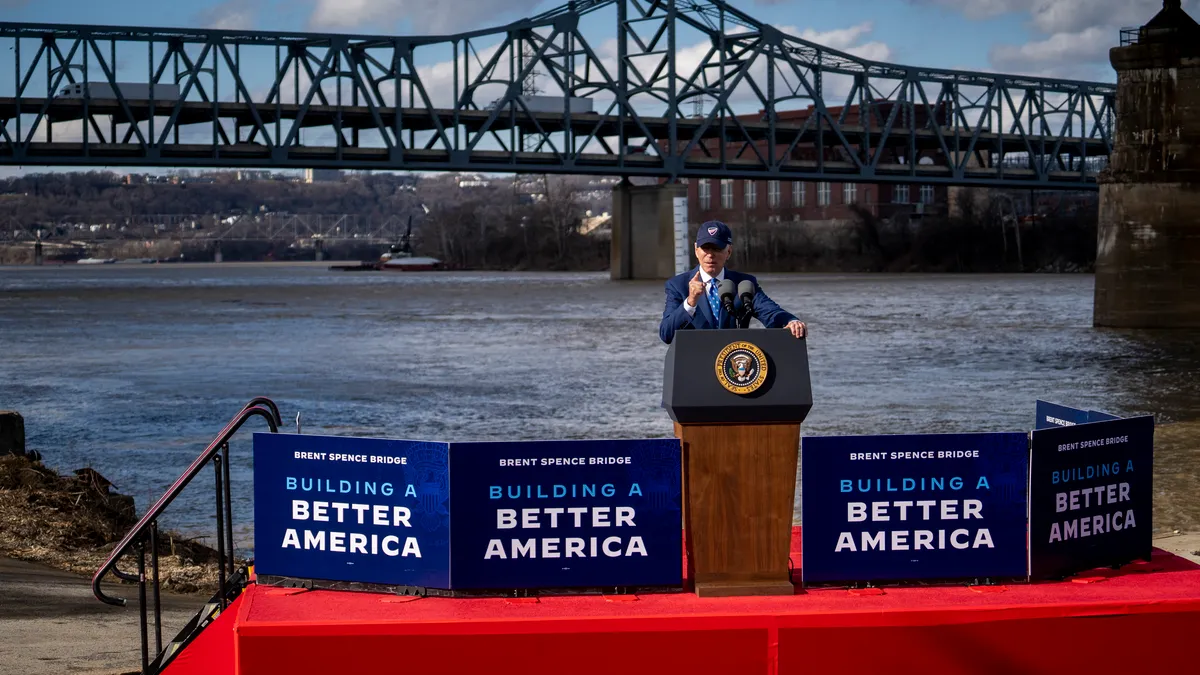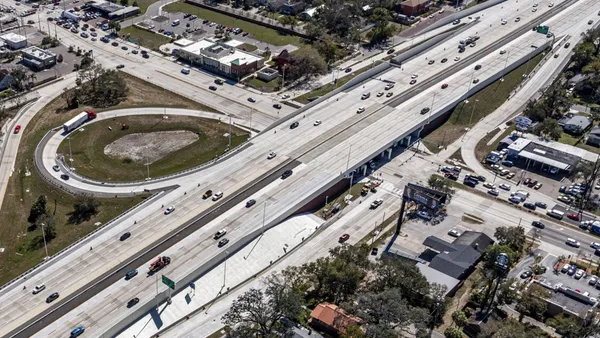Dive Brief:
- Three years into the five-year federal law, $568 billion, or 47%, of Infrastructure Investment and Jobs Act funds have been announced, per a White House fact sheet released Nov. 15.
- More than 66,000 construction projects are advancing via President Joe Biden’s signature piece of legislation.
- Announced funds are up about 25% from $454 billion for 56,000 projects disbursed as of May — the law’s halfway mark — and up 42% from the year-ago period. The law, however, faces an uncertain future as the Trump administration prepares to take office.
Dive Insight:
Biden officials are rushing to get infrastructure funds out the door ahead of the incoming Trump administration, AP News reported. On Nov. 15, Transportation Secretary Pete Buttigieg announced over $3.4 billion in IIJA grants to expand passenger rail, make roads safer, improve ports and otherwise strengthen supply chains, according to a U.S. DOT news release.
“We’re in the middle of an infrastructure decade unlike anything this country has seen since the time of Eisenhower and the Interstate Highway System,” Buttigieg said in the release.
Although 19 Republicans voted for the IIJA, President-elect Donald Trump has pledged to scale back the government and dismantle parts of Biden’s bills. Experts say that federal support for public transportation, Amtrak, high-speed rail and electric vehicles may be at risk.
Nonetheless, cutting IIJA funding may pose a political challenge, since Republican-leaning states and districts have benefited from it, per the Global Infrastructure Investment Association.
Still, Trump could put his own stamp on it by “reallocating funds within existing frameworks, streamlining regulations to speed up project approvals, emphasizing public-private partnerships (P3s), focusing on energy infrastructure such as pipelines and refineries, and potentially directing funds towards border infrastructure,” per the GIIA.
Many members of the construction industry expect that infrastructure funding is here to stay. New PCL Construction CEO Chris Gower told Construction Dive, “Generally, I don’t think there will be a major pullback in infrastructure spend.”
Where IIJA funds have gone thus far
The $1.2 trillion IIJA’s size and complexity pose challenges to implementation, according to Brookings research.
Announced funding, captured from agency press releases, is preliminary and non-binding, whereas awarded funding represents actual obligations, according to the White House. The funding flows through more than 400 programs and is channeled by a variety of federal, state and local entities. The amount of awarded funding to date, however, is unclear.
The largest portion of IIJA money is designated for road and bridge construction, according to White House data analyzed by CNBC, followed by rail, broadband, power and water projects. Biden has also focused on replacing lead pipes nationwide in the next decade.
Per the White House, the IIJA has created 940,000 construction jobs and funded:
- 11,400 bridge projects.
- Improvements on over 196,000 miles of roads.
- 6,000 cyber security and climate resilience efforts.
- 2,400 drinking water and wastewater projects.
- 580 port and waterway projects.
- 400 airport projects.
The Biden administration also touted its three-part approach to speed up federal permitting:
- Invested $1 billion through the Inflation Reduction Act to hire experts and invest in new technologies to expedite reviews.
- Passed reforms to the National Environmental Policy Act and finalized the Bipartisan Permitting Reform Implementation Rule to accelerate the environmental review process.
- Used executive authorities to improve permitting and environmental review processes.
The administration said it has also expanded the use of categorical exclusions, the fastest form of environmental review.














